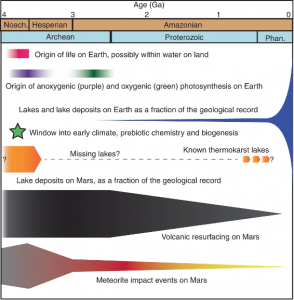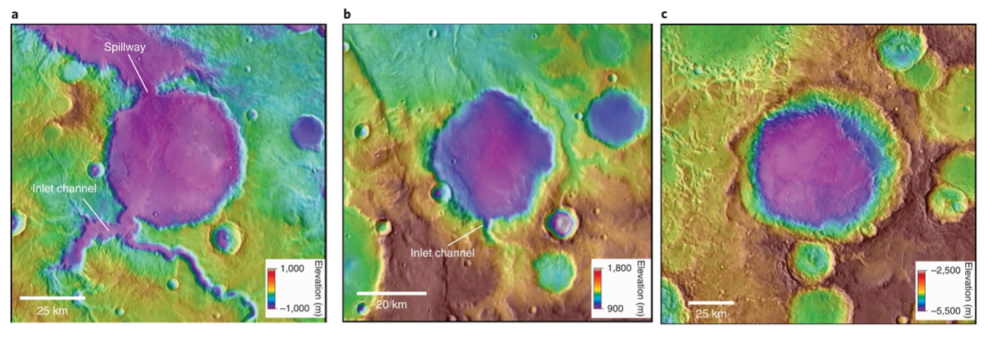Number of ancient Martian lakes might be dramatically underestimated, suggested Dr. Joe Michalski
Infrared image mosaics from Mars Orbiter Laser Altimeter data showing examples of (a) open-basin lake, (b) closed-basin lake, (c) groundwater-fed lake with no channels.
Recently published in Nature Astronomy, LSR Deputy Director Dr. Joe Michalski and his fellow team members proposed that the number of ancient Martian lakes might have been dramatically underestimated.
With remote sensing techniques including visible imaging, infrared imaging, multi-and hyperspectral analysis, stereo imaging, and laser altimetry, approximately 500 lake basins were evident to have once existed on Mars. While nearly all these discovered ancient lakes are of sizes larger than 100 km2 and small-sized lakes are difficult to identify on Mars by satellite remote sensing, it is suggested at least 70% of Martian lakes have yet to be discovered.
The discovered Martian lakes mostly dated to the Noachian (>3.7 Gyrs ago (Ga)), lasting a geologically short time span of 100-1,000,000 years, indicating a mostly cold and dry Mars with episodic warming periods. With characteristics of ancient atmosphere and climate potentially preserved in the lacustrine deposits that contain detrital Fe/Mg-rich clay minerals as well as authigenic Fe/Mg carbonates, sulfates, silica, chlorides and clay minerals, probable discoveries of smaller Martian lakes could be critical to understanding past climate, and possible life, on the planet, as well as in reconstructing geology and geobiology of inland waters on the Archaean Earth.

Conceptual diagram comparing important aspects of the geology of Mars and Earth.
Visit Dr. Michalski’s page to learn more about his research.
The full article can be accessed here.


